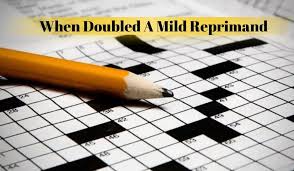Have you ever wondered what secrets lie within the dots and dashes of Morse code? This intriguing method of communication has fascinated people for generations. It’s more than just a series of signals; it’s a bridge to the past and a tool that can still spark creativity today. With technology at our fingertips, creating your very own Morse code generator is easier than you might think. Whether you’re looking to send playful messages or simply explore this historic form of encoding, building your own generator opens up a world of possibilities. Let’s dive into the captivating history and importance of Morse code before we embark on constructing your unique generator!
History and Importance of Morse Code
Morse Code emerged in the early 19th century, created by Samuel Morse and Alfred Vail. It transformed communication, especially over long distances. The simple yet effective system uses dots and dashes to represent letters and numbers.
This code became essential for maritime safety. Ships relied on it to send distress signals. The iconic SOS signal is universally recognized even today.
During wartime, Morse Code proved invaluable. It allowed messages to be transmitted quickly and discreetly between military units.
Despite advances in technology, its legacy endures. Today, enthusiasts still value Morse Code as a form of expression and creativity. Its rhythmic nature captivates many who explore it through sound or light signals.
Understanding its history reveals how critical communication has shaped human connection across generations.
Basic Components of a Morse Code Generator
Creating a Morse code generator involves understanding its core components. At the heart of it lies an input method, which could be anything from a keyboard to switches that represent dots and dashes.
Next, you need a conversion mechanism. This is where your letters transform into Morse code sequences. A simple algorithm can efficiently map each character to its corresponding dot-dash representation.
The output component is equally important. This could be visual signals like LED lights or auditory signals such as beeps or tones. Choosing how you want to communicate in Morse adds an exciting twist.
Consider adding a user interface for ease of use. Whether it’s on-screen buttons or physical toggles, ensuring accessibility will make your generator more enjoyable and functional for everyone interested in this timeless communication method.
Step-by-Step Guide on Building Your Own Morse Code Generator
Building your own Morse code generator is a fun and rewarding project. First, gather your materials: a microcontroller like an Arduino, a buzzer or LED, and some basic wiring components.
Next, set up the circuit. Connect your buzzer to one of the digital pins on the microcontroller. If you’re using an LED instead, ensure it has a resistor in series to prevent damage.
Now comes the programming part. Write simple code that translates text into Morse code signals—dots for short sounds or flashes and dashes for longer ones. Libraries are available online to help you get started if coding isn’t your strength.
After uploading your program, test it out! Type in words and see if they convert accurately into beeping sounds or light signals. Make adjustments as needed until everything works smoothly.
Tips for Improving and Personalizing Your Generator
To truly make your Morse code generator stand out, consider customizing its sound. Experiment with different tones or rhythms to find a unique auditory signature.
Incorporating visuals can also elevate the experience. Design a simple interface that displays the Morse code in real-time as you input text. This not only aids understanding but adds an engaging element to your project.
You could integrate features like speed adjustment for learning purposes; beginners may benefit from slower transmission rates while advanced users appreciate faster speeds.
Additionally, think about creating themed messages for special occasions—birthdays or holidays can be fun opportunities to share coded surprises with friends and family.
Don’t hesitate to explore incorporating mobile compatibility or even Bluetooth functionality, allowing it to connect seamlessly with other devices for enhanced usability.
Fun Ways to Use Your Morse Code Generator
Morse code can add a unique twist to everyday activities. Consider using your Morse code generator for secret messages with friends. Create coded notes and share them in class or at work. It’s a fun way to communicate without others understanding.
Another entertaining idea is hosting a themed party where guests decode clues leading to hidden treasures around the venue. Incorporate Morse code into games, such as scavenger hunts or trivia contests, and watch your guests engage in playful competition.
For artistic expression, turn Morse code into visual art. Use beads or paint dots on canvas to represent different letters and spells out meaningful phrases or names.
Try incorporating it into DIY projects like custom jewelry or home decor items that display special dates encoded in Morse code. Each piece becomes both personal and intriguing!
Conclusion
Creating your own Morse code generator opens up a world of possibilities. This fascinating form of communication, developed in the early 19th century, continues to captivate enthusiasts today. By understanding its history and significance, you not only appreciate its role in advancements like telegraphy but also connect with an innovative piece of our past.
Building a Morse code generator can be both simple and rewarding. As you gather basic components and follow the step-by-step guide, you’ll find that even a novice can create something meaningful. Customizing your device allows for personal expression, making it even more enjoyable.
Once you’ve built your generator, think about fun ways to use it. Whether it’s sending secret messages to friends or coding unique designs for events, the possibilities are endless. Each beep and pause carries a story waiting to be told.
Engage with this timeless method of communication through creativity and innovation. Your journey into Morse code is boundless; let each dot represent new discoveries while each dash signifies progress into uncharted territories of learning and interaction!



